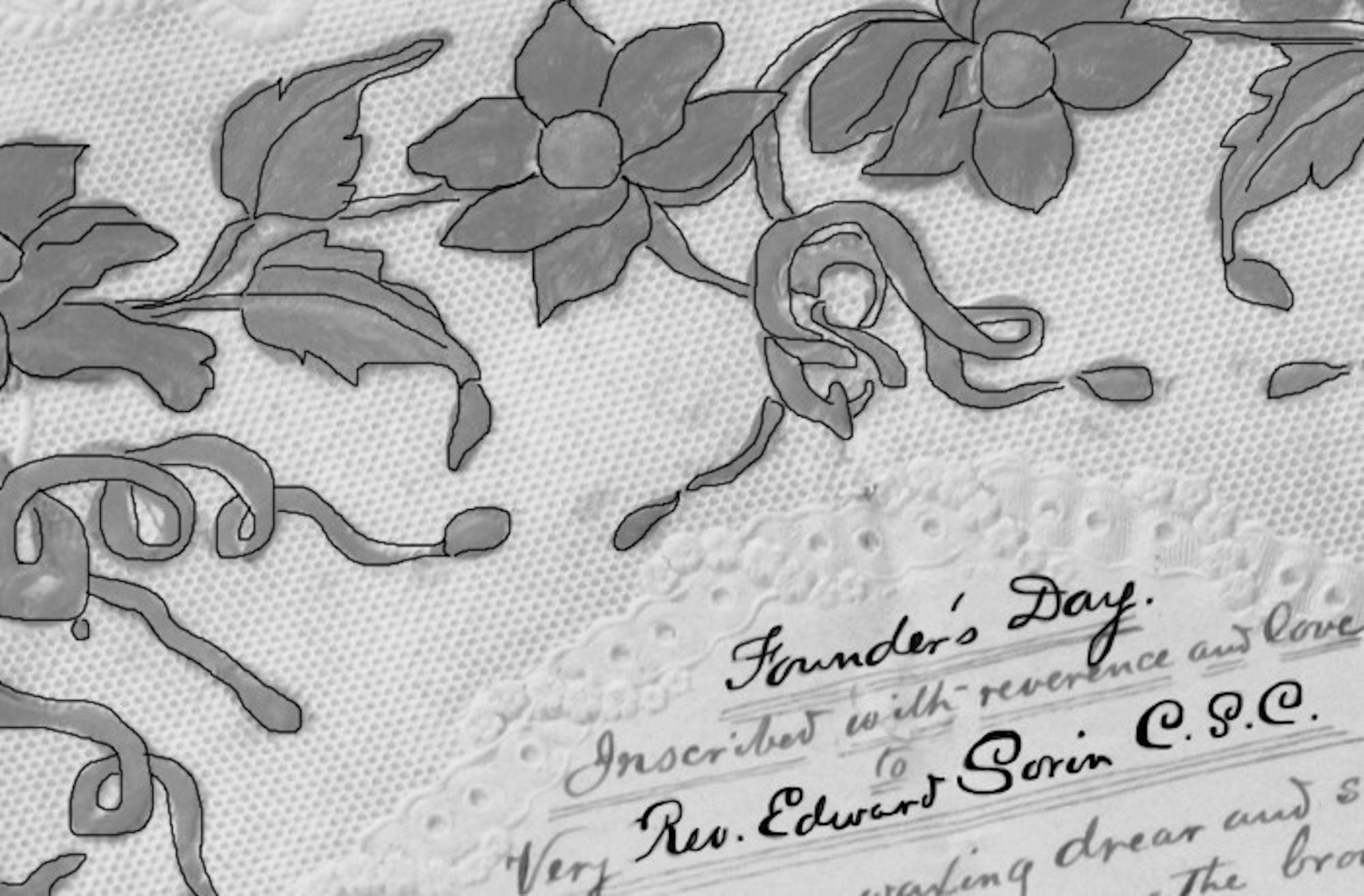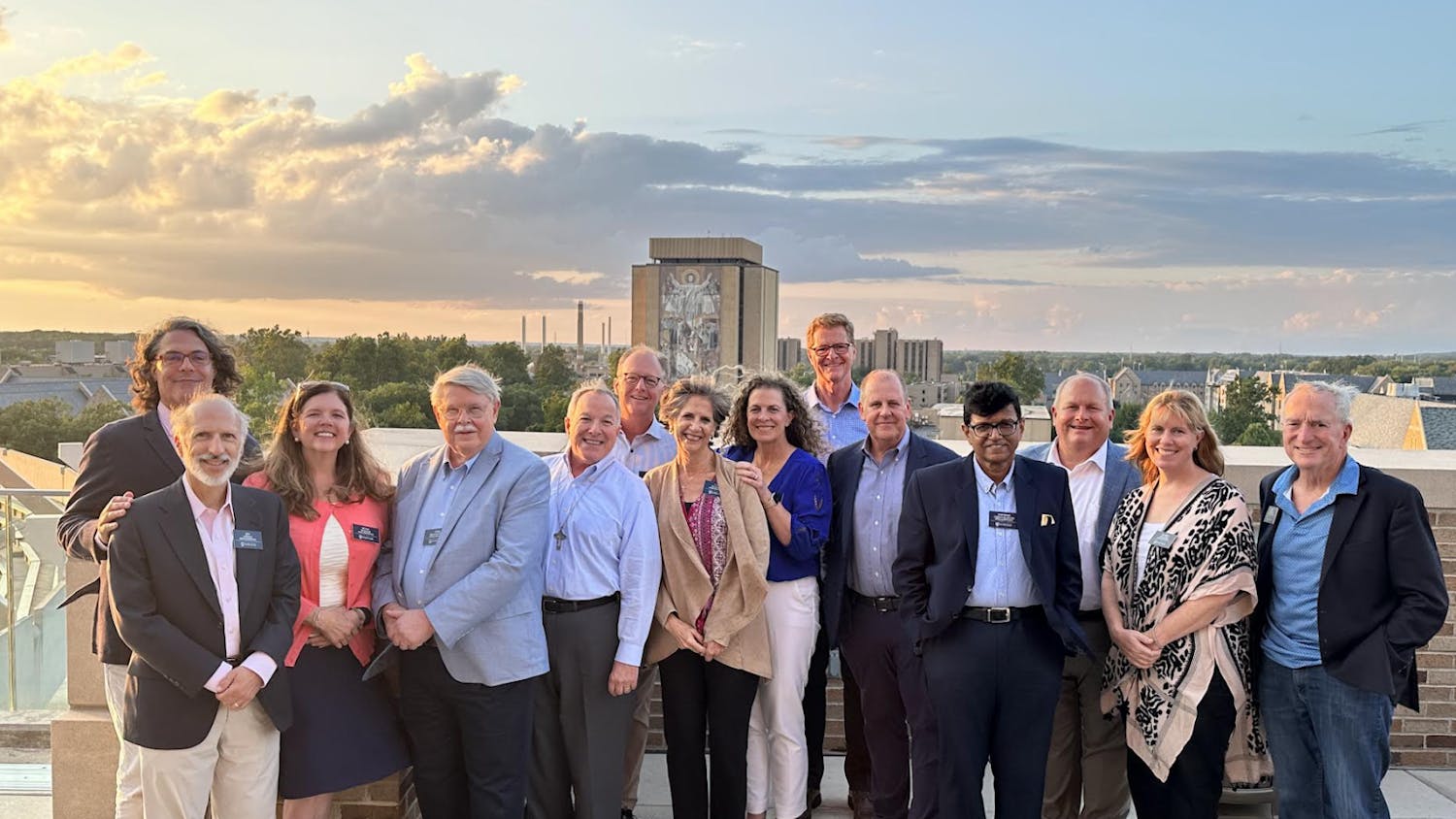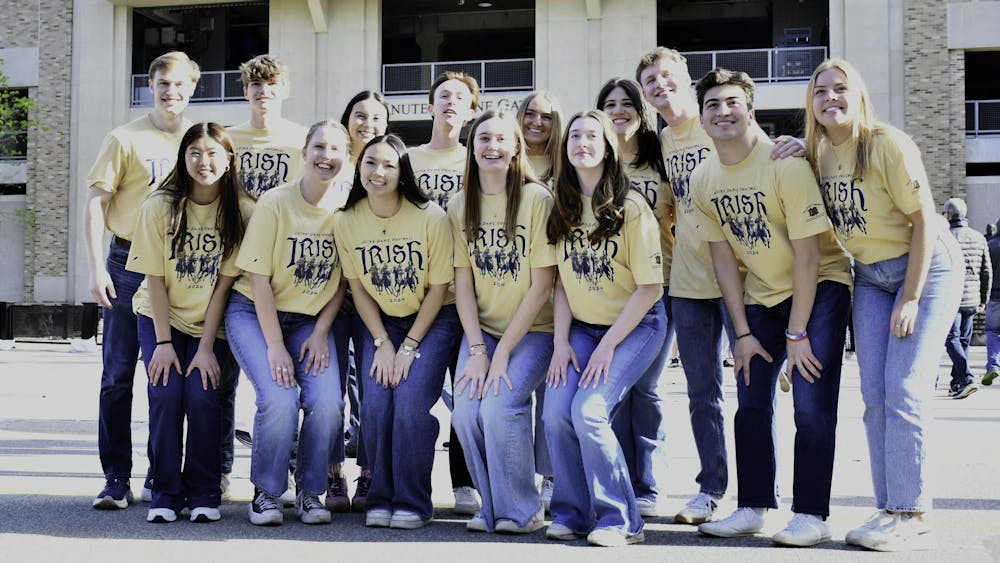Despite the University’s continuing fanfare in honor of his 200th birthday, which took place Feb. 6, Notre Dame’s founder, Fr. Edward Sorin, discouraged the celebration of his birthday in favor of Founder’s Day, the Oct. 13 feast day of his namesake St. Edward.
Peter Lysy, archivist for the University’s records, said this preference reflects French culture at the time.
“I think he just followed the tradition he was brought up in where you just celebrate your saint’s day instead,” Lysy said. “So, St. Edward’s Day became Founder’s Day.”
While the basic story of Sorin’s role in founding Notre Dame is well known, many aspects of Sorin’s personal history are unfamiliar to students, including the influence of his French upbringing on his decision to become a priest, Lysy said.
“There was anti-clericalism at the time in France, especially during the Revolution, a little less so during the Napoleonic Era, and then when there was the restoration of the monarchy, there was also an attempt to reestablish the Church, so that was the context in which Sorin decided to become a priest,” he said. “But he was an enthusiastic American. He [thought] his contribution to mankind and to Catholicism was going to come through America.”
“The bishop in the fall of 1842, so a year after Sorin got to America, said that he has this property, which had been given to him, sold to him, in northern Indiana, on the condition ⎯ there was a proviso in the agreement ⎯ that an educational institution be established there,” Lysy said. “So Bishop [Célestine Guynemer de la] Hailandière offered that to Sorin on the condition that within two years he build a school here.”
The site had been a location for French missionaries in the past, but Sorin turned it into a place with many different levels of schooling, from elementary to commercial to manual labor, Lysy said.
In the early years of the University, Sorin was quite protective of Notre Dame, as exhibited during a cholera outbreak on campus in 1855, according to Arthur J. Hope’s book, “Notre Dame — One Hundred Years.” Sorin determined the illness was caused by mosquitos inhabiting the marsh land surrounding campus, so he intended to buy it, but the land’s owner was uncooperative, according to Hope.
“In principle, they had agreed to the sale, but when the time came to consummate the sale, the [land’s owner] left town,” Lysy said. “So [Sorin] couldn’t consummate the deal, yet he wanted to knock down the dam that was on that property to drain the swamp because that would help alleviate the mosquitos.
“So he just organized the brothers, and they went over and chopped down the dam anyway, even though he hadn’t bought the property yet. But he did buy it subsequently. So it’s Sorin taking bold extralegal action to solve a problem.”
Sorin also solved a conflict with some of the Holy Cross brothers by sending them to pan for gold in California during the gold rush, Lysy said. Sorin often disagreed with his Holy Cross superior in France, Basil Moreau, in defense of Notre Dame, Lysy said.
“At one point, Fr. Moreau ordered [Sorin] to go to Algeria or some place as a missionary, and he said, ‘No, I’m not doing that,’” Lysy said. “Given the distance between them, Sorin could exercise some independence from him.”
Sorin would often sail to Europe, and in fall 1875, his vessel was shipwrecked in the middle of the Atlantic Ocean, according to Hope.
While Sorin was planning to sail to Europe in April 1879, he had to turn back because a great fire engulfed the campus, according to Hope, but this famous fire was not the only one to hit Notre Dame in its early years.
“In 1849, there was a fire that almost put us out of business,” Lysy said. “And the original Log Chapel burned down in 1856, although it was being used as a stable at that time. It didn’t have the cache then that it does now. Fifteen years later, it was a junky old building that they’d be happy to get rid of, and now it’s historic.”
After the great fire, however, Sorin felt compelled to rebuild the campus even better than it was before, which Timothy Howard recounted in a letter to Fr. Daniel Hudson, a correspondence Hope reprints in his book.
“I was then present when Fr. Sorin, after looking over the destruction of his life-work, stood at the altar steps of the only building left and spoke to the community what I have always felt to be the most sublime words I ever listened to,” Howard wrote. “There was absolute faith, confidence, resolution in his very look and pose. ‘If it were all gone, I should not give up!’ were his words in closing. The effect was electric. It was the crowning moment of his life.”
Despite all of Sorin’s accomplishments, Lysy said he would most likely want to be remembered as an educator.
“I think being remembered as a saintly, gentle man who wanted to educate youth and wanted to develop them [would make Sorin happy], and for him, a major part of that would be to have them be good, orthodox Catholics,” Lysy said. “That’s fundamental to what his mission would be as a priest, but also to be educated with the sense that education and Catholicity go together. They’re not in opposition, but they mutually reinforce each other.”













